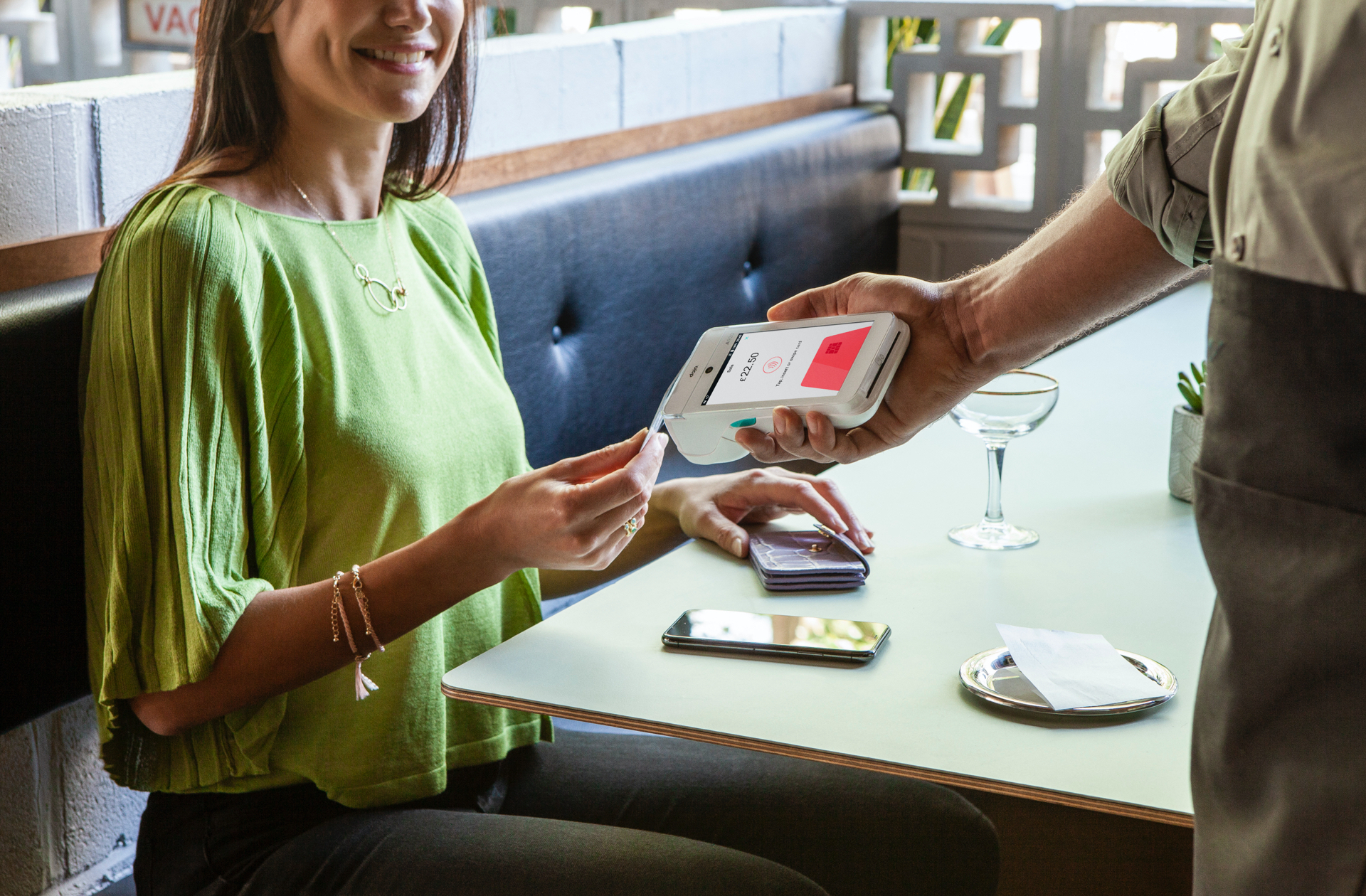We all know how it feels when your credit card is declined – frustrating at best and embarrassing at worst. And as a business owner, you've probably had to deal with your fair share of declined customer transactions.
In a situation uncomfortable to both parties, you could risk losing a sale, while your customer could grow more and more irritated. So what’s the best way to deal with a declined card transaction that leaves both of you happy?
In this post, we've outlined what a card decline is and some steps to help you navigate the situation.
Business advice: What is a card decline?
A card decline typically occurs when a transaction can’t be processed and the transaction is declined by the payment gateway, the processor, or the bank issuing the credit or debit card. In general, the industry refers to card declines as either ‘soft’ or ‘hard’.
We’ve explained the difference between the two below. But, with Dojo card machines, you don’t have to worry about understanding complex industry jargon.
We’ve simplified your card machine’s messaging with three straightforward error screens – failed, declined or cancelled.
Why was the payment declined?
Knowing whether a transaction has failed or was declined will help you understand how to act and the next steps to take with your customer.
Failed transactions (also known as soft declines)
A soft decline or a failed transaction is a temporary authorisation failure – it's not an outright refusal from any party involved to process the transaction. In fact, it can occur before the transaction reaches the issuing bank – for example, the card machine losing internet connection.
A declined payment could be because of one of the below reasons:
- The debit or credit card is being used unusually – i.e. in a different country or for higher-value goods
- The card has exceeded a spend limit during a specific time period
With failed transactions, you can still try to process the transaction again even though it failed the first time round, as the decline is only temporary.
Declined transactions (also known as hard declines)
A declined transaction, also known as a hard decline, means that something external has blocked the transaction from going through. There are many reasons for declined transactions, and they’re deliberately kept vague to avoid compromising the cardholder’s security.
An example of a declined transaction is when the cardholder didn’t have sufficient funds in their bank account, in which case their issuing bank blocked the transaction. Other reasons include fraud checks, aiming to minimise the risk of identity theft.
Hard declines include attempts to use an expired card, or cards that have been reported lost or stolen. If a customer’s card is declined, it’s not likely the transaction will go through a second time.
You should advise the customer to get in touch with their bank directly to understand the actual cause of the decline and resolve it accordingly.
Cancelled transactions
You can cancel a transaction on your Dojo card machine before the cardholder has tapped their card (for contactless payments) or inserted it and entered their PIN. You may want to cancel a transaction for a number of reasons – perhaps the customer has changed their mind at the last minute or you’ve accidentally keyed in the wrong amount.
Tips for dealing with customer card declines
If a transaction doesn’t go through, it’s a good idea to act with discretion. Check your machine first to see if the transaction failed or declined as this can help you tailor your response. If the transaction fails you can try it again and check things like your card machine’s internet connection.
If the card transaction was declined, it’s highly unlikely you’ll know why, so you can follow these tips on how to deal with your customer in this situation.
Discreetly tell your customer their card is declined
Having your card declined could be embarrassing, even when it’s just a tech glitch rather than a lack of funds. So it’s better to be as discreet as possible when communicating this. Show understanding and patience – often there’s nothing you can do about a declined transaction as the responsibility is on your customer and their bank. However, good communication can make the whole experience run a little smoother.
Check if the card has expired
A quick glance at the card’s expiry date can give you some indication of the problem. Your customer may have picked up their old card instead of their replacement one without realising it.
Request a different payment method
If the transaction has declined rather than failed, you could ask if your customer can use a different payment method – like cash or another card. Suggesting an alternative payment method also reduces the chances of your customer abandoning the purchase altogether.
Be wary of card fraud
While a card decline may be due to an innocent error, it’s worth being cautious. For example, your customer might be trying to use a card that has been reported lost or stolen.
To be prepared for situations like this, make sure you and your team are familiarised with the rules the card issuers have set for merchants handling fraudulent transactions. Visa, Mastercard and American Express have all published their own guidance on handling suspicious card transactions.
If you entered the card details manually, double-check that all details are correct
When dealing with a card not present (CNP) transaction in person, whereby you’re manually entering the cardholder’s details, human error becomes a factor. Make sure you’ve entered all details correctly.
Check if the card was declined based on location
Sometimes the bank might decline a transaction because the payment card was used at a new location. If the cardholder failed to notify their issuing bank of their travels, for example, the new geolocation might be seen as suspicious – and the attempted transaction may put the account on high alert.
If this is the issue, your customer simply needs to call their bank to let them know they’re abroad. Today, this could be done even quicker via their banking app or through a text message (depending on their bank).
Be aware of declined transaction costs
Finally, a declined transaction costs you the authorisation fee for submitting it for approval. And while this fee is typically quite low per transaction, the costs can quickly add up if you’re dealing with multiple declines.
Should you try the transaction again with the same card?
This largely depends on the type of error. When you’re dealing with a failed transaction, it’s not the customer’s card that’s the problem so it’s fine to try to run the same payment card again.
The issue might be outside of the cardholder’s control, such as a timed out internet connection. So, advising your customer to retry can help motivate them to continue with the purchase.
However, if it’s a declined transaction using the same card is unlikely to remedy the situation – and you shouldn’t recommend that your customer retry their card too many times. Either suggest that they use a different payment method or that they call their issuing bank to find out what the problem is.
The card may have been declined due to fraud concerns, triggering fraud protection. As mentioned above, a common reason is an international purchase, where the cardholder is using their card in a different country than the one their account is registered in.
If they failed to inform their bank in advance of their travels, the attempts to use the card abroad may have been seen as suspicious. Another reason for the bank to be on high alert could be a large purchase, such as expensive jewellery.
The bottom line is, credit card companies do track their customers’ card activity to minimise fraud as much as possible. So if the customer does a quick call with their issuer, alerting them of international travel or a larger-than-usual purchase, their problem should be sorted – and the transaction can be processed upon another try.
Payment declined? Simply stay calm and follow these simple steps to minimise your exposure to fraud and frustrating your customers. Don’t forget to put your business in control as much as possible with a Dojo card machine.


